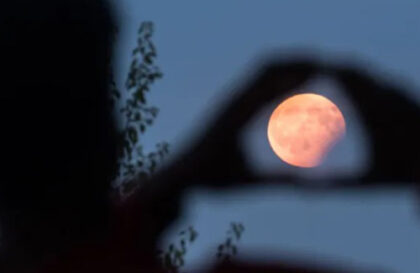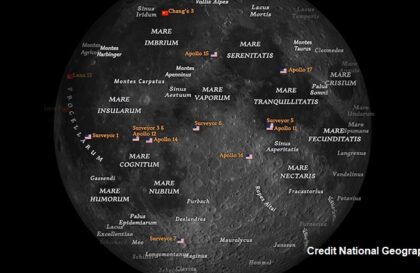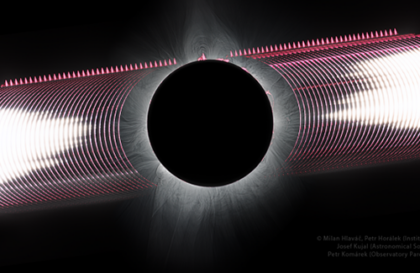The new moon is the phase of the moon at which its position on the celestial sphere coincides with the position of the sun. At this time, the Moon is between the Earth and the Sun, in line with them. If they are aligned exactly, a solar eclipse occurs.
At the time of the new moon, the Moon is not visible in the night sky, since it is very close to the Sun on the celestial sphere (located no further than 5°) and faces the Earth with its night side. However, sometimes you can see it against the background of the solar disk, which is called a solar eclipse. Also, sometime (usually about two days) before or after the new moon, in a very clear atmosphere, you can see the thin disk of the Moon illuminated by faint light reflected from the Earth’s surface. This phenomenon is called the ashen light of the Moon.
From an astronomical point of view, the new moon event is independent of the observer’s location and is not associated with the Moon crossing the horizon; it occurs simultaneously for the entire Earth.
However, in the traditional understanding, the new moon is associated with the moment when the Moon first appears above the horizon, while being in its least illuminated phase. From this moment, the counting of days according to the lunar calendar begins for a given area, usually in the range from 1 to 29 (or 30) days. Each new lunar day begins with the moon rising above the horizon.
New Moon 2020: A rare Black Moon will rise this week (Image: GETTY)
However, for residents of high latitudes (in different years from the 62nd to 72nd parallel), the Moon does not cross the horizon for several days to six months. In such areas, counting lunar days becomes meaningless, just as it makes no sense to count days by counting sunrises above the horizon due to the presence of the polar day and polar night above the Arctic Circle.
Because new moon nights are dark, they are often the best time to observe other celestial objects such as planets, meteor showers, and deep sky objects such as star clusters, nebulae, and galaxies.
Image credit:
https://solarsystem.nasa.gov
https://www.express.co.uk






